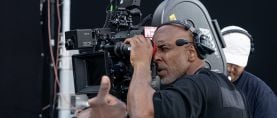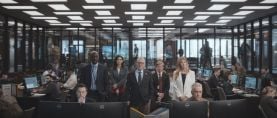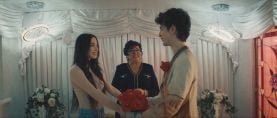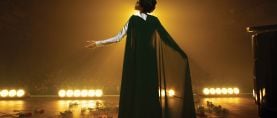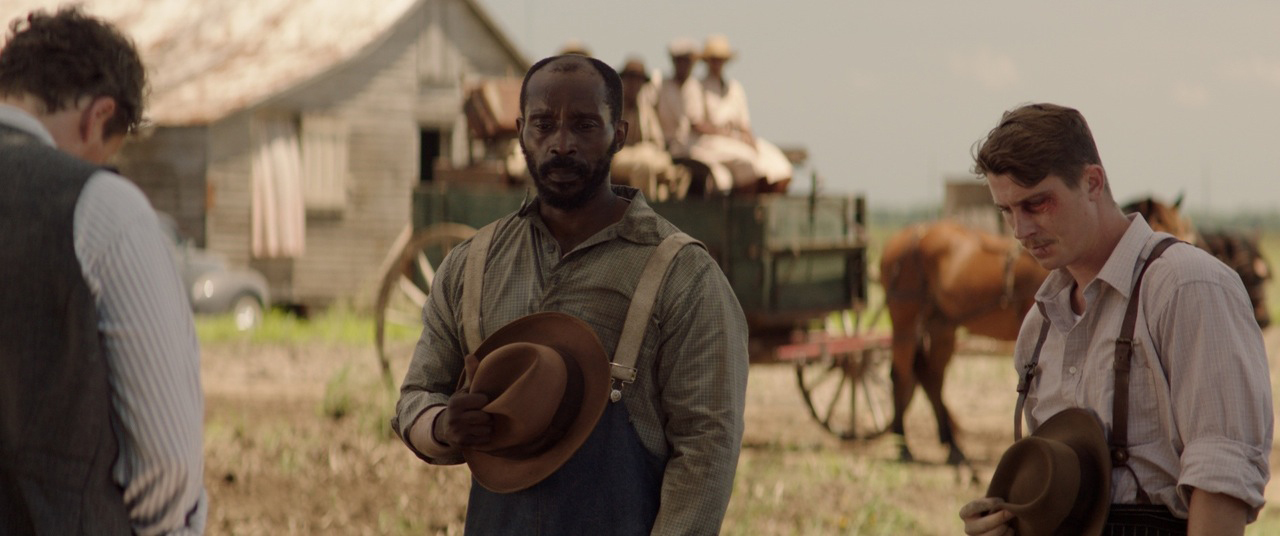
Mudbound: American Dream Meets American Reality
At the Camerimage Film Festival, Rachel Morrison, ASC spoke with AC about her feature film Mudbound — a period drama set in the Deep South.
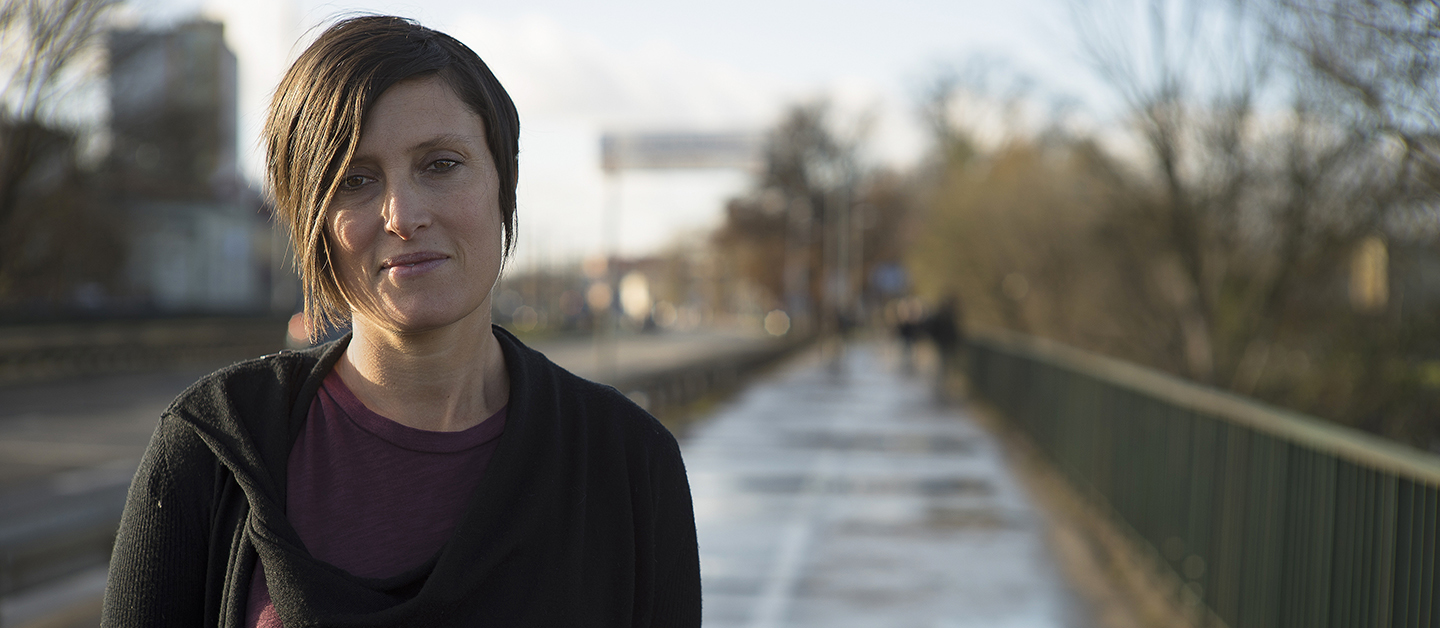
Before introducing her feature film Mudbound at a recent screening during the Camerimage Film Festival, Rachel Morrison, ASC spoke with AC about working on this period drama set in the Deep South.
Based on Hillary Jordan's debut novel, Mudbound contrasts two families — the McCallans and the Jacksons — grappling with poverty on a cotton farm in the 1940s. As they struggle to produce a crop, racial and economic undercurrents surface, threatening both families in different ways.
Dee Rees previously directed Pariah (shot by Bradford Young, ASC) and the Emmy-winning Bessie (shot by Jeffrey Jur, ASC).
American Cinematographer: What convinced you to join this project?

Rachel Morrison, ASC: I knew Dee from the indie circuit. I had seen [her 2007 short film version of] Pariah, which I thought was beautiful, and I thought she did an exceptional job turning it into a feature. We had a mutual respect for one another. When she called me about Mudbound it was an easy “yes,” which few films are. This script had everything I look for.
How did you two work on a visual approach?
The first thing I thought of when I read the script was the FSA, the Farm Security Administration, and the photographs they produced by people like Dorothea Lange and Gordon Parks. I always wanted to do something that was a tribute to that era. That was the reason why I got into photography, actually — the discovery of those photographs. That was probably my biggest influence. Dee was interested in the portrait artist Whitfield Lovell and his work on wood, which was very much a reference for the Jackson family, full of warm earth tones. She also loved Les Blank’s movies, like The Blues Accordin’ to Lightnin’ Hopkins, for their fluid, exploratory camera.
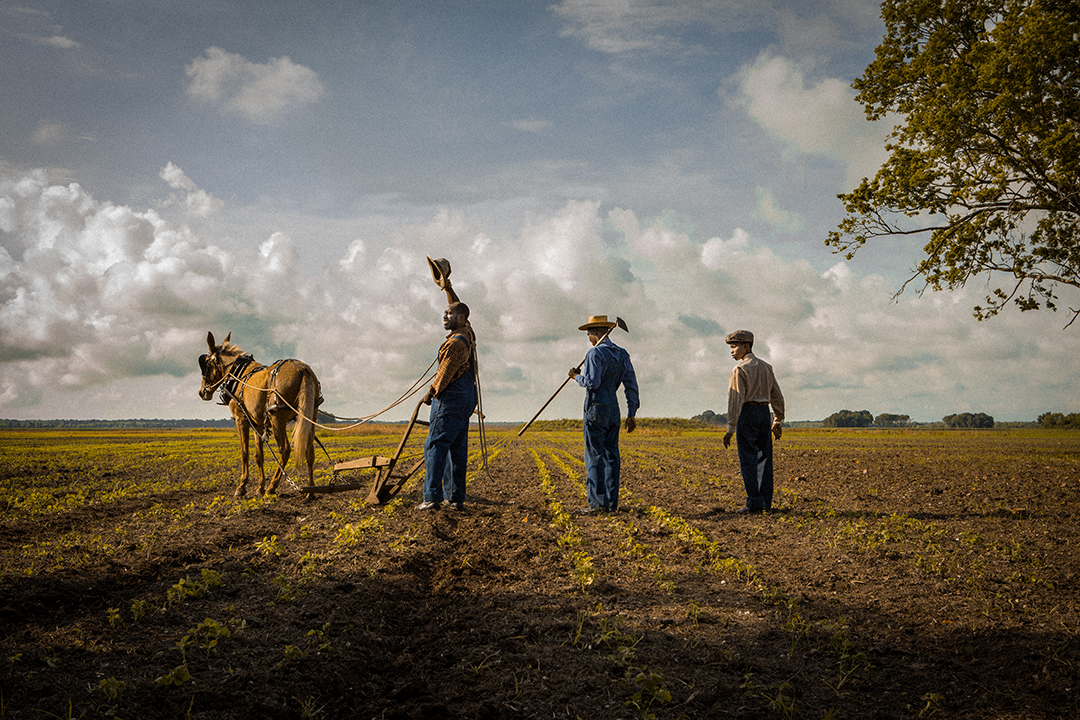
We didn’t have a singular narrative film reference for this film, which is maybe the first time I had gone into a film without that. I actually found it really liberating, because we were looking for our own way into the film component.
It’s one thing to research, how did you translate that into a visual strategy?
The goal was to juxtapose the American dream with the American reality, to juxtapose scope with intimacy. To use extremes and kind of marry them into one aesthetic. You obviously have so many different characters, so it became a question of how far do you go to give each character their own motif, but still have it feel fluid as one body of work, one film. So we kept looking to find the things that unify us and things that separate us.
Describe how you give someone a visual motif. Is that to help determine how we respond to them?
You can certainly light somebody as a good person or a bad person, or you can frame somebody as a lonely person or friendly one. There are ways in which composition and especially lighting can really affect the way we think of a character, or of their experience in that moment.
Take Laura's [played by Carey Mulligan] character. Her life before the McCallans move to the farm was stable, it was what she knew, it was comfortable. So we shot dollies, fluid camera movement, it was colorful and vibrant. Basically, when the McCallan family gets to the farm, things become less steady for them, so we went handheld.
The same for the Jacksons, the sharecropping family. Their life was fairly stable before the McCallans got to the farm. Within moments of the McCallans arriving, their life starts to unravel.
In that case we could develop a language that was unified to some extent, pre- and post-farm. And then in terms of a color palette, obviously it's a much more muted look once we get to the farm. Things like that become threads throughout the movie.
You asked how to make a character feel a certain way. In Laura’s case, as her life becomes more isolated, you can minimize her in the frame. You can put her in the far right corner of the frame, leaving all this empty space on the left side. Those are some of the ways to tell the story on a subconscious level, not trying to hit the audience in the face with the “I'm Lonely” button.
This is a very physical film, how did you collaborate with the actors?
Collaborating with the actors is reacting in the moment to what they’re doing. Not every actor delivers the same performance three times in a row. Most of the great ones do quite the opposite; they deliver a very different performance with every take.
Certainly operating is a big part of it. One of the reasons why I like to operate is because it’s so instinctive in responding to what the actor is giving you. And it’s different with a Steadicam or dolly, where fluid is always kind of one note. If you lay dolly track, for example, you can only go on that track.
You can rate hand-held from 1 to 10, make one scene a “2” and one a “6” in how hand-held it actually feels. Also, if I need to go completely off book because an actor goes completely off book, I'm right there with the freedom to do that.
As much as I can I try to light an environment and let the actors exist within it. Obviously there are parameters to that, but the really good actors know how to play in that world. Sometimes if you create a shaft of light, you can even pull the actor aside and go, “Here, you’re in the shadow. If you want a moment in the shadows, stand here. If you want to be seen, stand here.”
That's one example of how you can collaborate. Or a silhouette. Sometimes a silhouette is as strong as a close-up. I think really great actors will recognize that, they’ll give you as much in a body language performance as they would in a tear.
There are some particularly effective shots, like one of Carey Mulligan sitting on a porch at twilight.
With certain things it really depends on the right time of day. This is not a Terrence Malick film where we could shoot only at dusk and dawn. I don't know that we would have if we could. I don't think that it was supposed to be beautiful all the time. But dusk feels a certain way, it resonates almost the way a smell is a sense memory, and certain smells will take us to a place. I think everybody knows dusk, that feeling of the last few rays of light. You can't achieve that any other time of day. You can’t light dusk. They call magic hour “magic hour” because it’s magical, it’s never the same, you can’t create it.
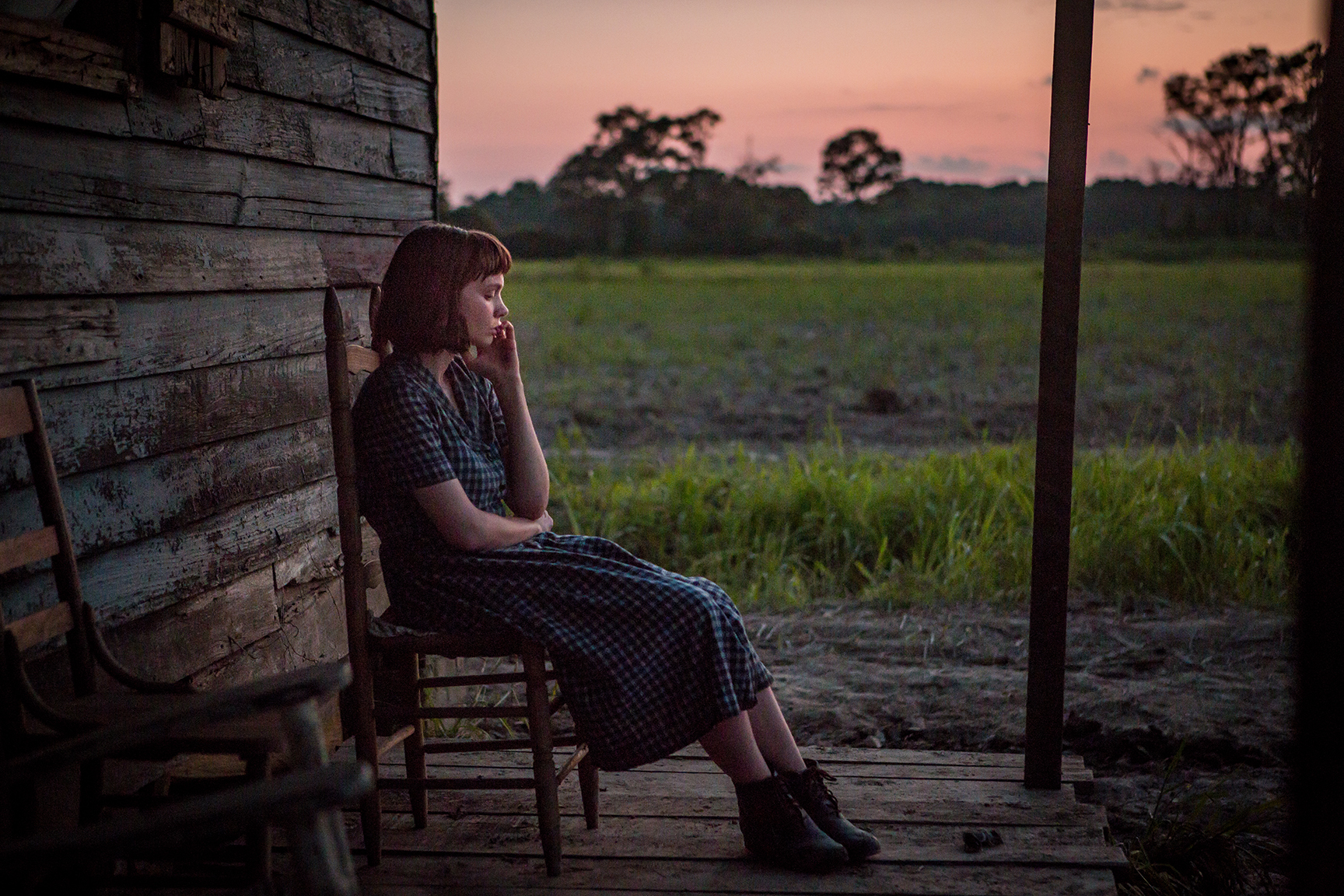
So that scene was one where I said to the first AD, we have to shoot this between, I don't remember but something like 8:12 and 8:18. You can be that specific once you've studied the light a little bit. Other times you're at the whim of the schedule and you have to shoot when you have to shoot.
There are some scenes where we wanted it toppy overhead, a kind of gritty, harsh light, because that was what was right for the moment. You kind of make those calls and do your best to schedule within those parameters.
Shooting on location, weather must have been a factor.
The weather was a character. The mud was a character. That was definitely intentional on a story level, but holy hell. We really went through it. We sort of lived the story itself, and to the extent that you can feel it in the film maybe it’s because we all embodied it.
It rained when we didn’t want it to rain, I mean I have pictures of rain towers in the rain. And then we had to make rain when it was full sun, we had to make storms and lightning when it was full sun. We had to try to match continuity in a climate that was not continuous at all. You start a scene in the sun and 45 minutes later you can't find the sun in the clouds, and then of course it would start pouring and then ten minutes after that it was sunny again.
It was a real ass-kicking. We had intended to shoot the film in January, which was would have been right for the fields, it would have been easier on everyone in the South, but of course the cast kept moving, financing kept moving and everything else. The next thing you know we're shooting in the summer in the South.
It was pretty much over a 100°F with probably a 100% humidity every day. With no respite from it, because we're out in these plantations, and the few interiors had no windows, so you couldn't air-condition them. I got heat exhaustion, sun poisoning — the medic had to come to my house in the middle of the night.
It was a real lesson in how the elements are so much more powerful than any one of us.
Mudbound is set in Mississippi but you shot in Louisiana.
All the cotton you see is man-made because there is no cotton in Louisiana. Maybe somewhere in Louisiana, but not where we were shooting. So our incredible production designer David Bomba made the cotton field. But every afternoon it would start pouring and lightning. And all of that cotton, because it was man-made, just drooped. We re-imagined and shot some long lens shots through out-of-focus, wilted cotton. Lightning means you have to turn the generator off, so we lost a lot of time not being able to light anything.
As hard as the weather was, I want to say, New Orleans is an awesome base for film. I couldn't have asked for a better local crew. I feel so fortunate. It's one of those films where you feel like you've all gone to war together because you've weathered the storm literally. And figuratively
Was this your first big period project?
I did Any Day Now which was set in the 1970s, but that was a minuscule budget. It was one of those period films where if you looked to the right or the left of any shot you were out of the period. As a result it was all fairly small, interiors, stuff like that.
This was the first period film I shot that had a bit more scope to it. It's such a gift to a cinematographer to be able to shoot a period movie. It's a little bit addictive. It's hard to go back to shooting contemporary apartment interiors after you shoot something like Mudbound.
David Bomba knew this period very well, he's done a good amount of work in it and had the knowledge and devotion to be accurate and authentic. So that was a great jumping-off point.
I really wanted it to feel analog. I used every trick in the book to try and help it look analog. I started with older glass. I ended up mixing anamorphic and spherical, the second time I've done that, but for different reasons.
I wanted the base to be anamorphic because I knew the fall-off would help us. Whenever you shoot period sometimes it's better not to see the detail too closely. But I also thought that the bokeh feels a little bit more analog to me for some reason. But the flare doesn't. For me that horizontal flare feels too contemporary.
So I brought on spherical glass because I knew when I was going to point at the sun or a pin-point source, I wanted a round flare.
I ended up doing a good amount of spherical work at night, just because the stop gave me the ability to light with candles and other practical sources. We really had nowhere to hide lights in those interiors. You couldn't do much lighting from the ceiling, and I don't love toppy soft boxes anyway.
But even the spherical glass was from the 1960s and 1970s. There's a softening around the edges and the imperfections that I wanted.
I think the reason I like film and analog in general is because it's imperfect, because it's tactile. To me life is imperfect, it's not repeatable, everything is sort of organic.
If you can't get that quality with the sensor of the camera, you can start with glass that's imperfect. Sharper in certain areas than others, which is its own unique tool, it's almost like putting Vaseline on the lens. You can select what area you want viewers' attention to go to.
But the period details don't stand out like they do in some productions.
I don't think we were trying to glorify it. We weren't remembering it as a golden age. That's partly the nature of the script, partly maybe me as a DP. I don't try to make things look better than they are, I just try to make them look the way they are.
I wanted it to feel lived in. It kind of goes back to instinct. There are some things I can tell exactly how and why I do them, and then there are other things that just..., that's my eye. We say it's the eye but it's really the heart, the gut. That thing that feels right, so that's where you gravitate. I don't think it's something I can even articulate. It's me.
Some cinematographers seem to be fetishizing period details.
It feels like hitting the nail on the head. And at the end of the day it's not a movie about the period, it's a movie about people. Sometimes DPs try to make the period a character. But here it's not a character — the mud's the character, the weather's the character. The relationships are what matters. I was never trying to make the 1940s a character. I was trying to make the elements a character.
You went from Mudbound to Black Panther, a Marvel Studios movie. What was it like to work on such a big production?
It was really fun, because I had never done it before. I always enjoy a new challenge. Everything's on a much bigger scale. It's the first time I didn't know everybody on my crew's names. It's a much bigger ship to turn, but then you can do great things because it's this big ship.
How you compose shots when effects will be added later.
We didn't have any fully CG characters. That's different when you have a character that's four feet taller than all the rest. Our characters were real. I wasn't composing shots for foreground that wasn't there. It was more about imagining what the background was going to be, and lighting a fire scene without any real fire.
It's tricky, it's a bit of a mind meld. But as long as you're all on the same page, it should all come together in the end. Normally it's a triad, at least my experience has been the director, the production designer, and me. And we all have to be telling the same story. In a movie like this it's four people, the director, production designer, DP, and the VFX supervisor. As long as everyone is on the same page for what that thing's going to be, I can light it in a way that's going to make sense.
Where it breaks is when suddenly the background becomes something totally different. I've lit for day and it becomes a night scene, I've lit for fire and they decide to make it ice. Then we're all screwed.
Did you work with pre-viz?
There was a good amount of pre-viz. We used pre-viz as a jumping off point. If we're lost, here's our map. There are other Marvel movies where every day it's 10 shots from pre-viz, they have their marching orders weeks in advance and that's what they're shooting. That was not our approach.
Getting back to Mudbound, there is a lot of voice-over from several characters. Does that change how you compose?
Sometimes. But a lot of the voice-over Dee wrote after the fact. There were some scenes where the voice-over was in the script so we made sure either that the shot was long enough, that we gave ourselves enough time in the moment to carry the voice-over, or that we were making sure that we were telling the same story but not hitting the point over the head.
What I think works so well in this film is that the voice-over isn't expositional, it's not telling you what happened, it's more poetic. So you want the cinematography to be a reflection of that poetry, make sure the shot is interesting enough to carry the poem.
Mudbound was an especially diverse production.
That was one of the things that was so awesome and refreshing. A female director, female DP, female producers, female editor, female sound mixer. Even a female composer. I had no idea how rare that was, apparently they’re even more unicorn than we are.
I hate even saying the term “female DP” or “female” anything really. Could you imagine if we were like, my female teacher, my female doctor, etc. It’s so bananas that this is even still a conversation. Our job is to visualize human emotions, it’s to be empathetic. And if women are known for anything, it's for being empathetic. It's crazy that we are still only 2 to 4 percent of working cinematographers.
The production of Mudbound is detailed in the December issue of AC, while Black Panther will be featured in AC’s March 2018 edition.
